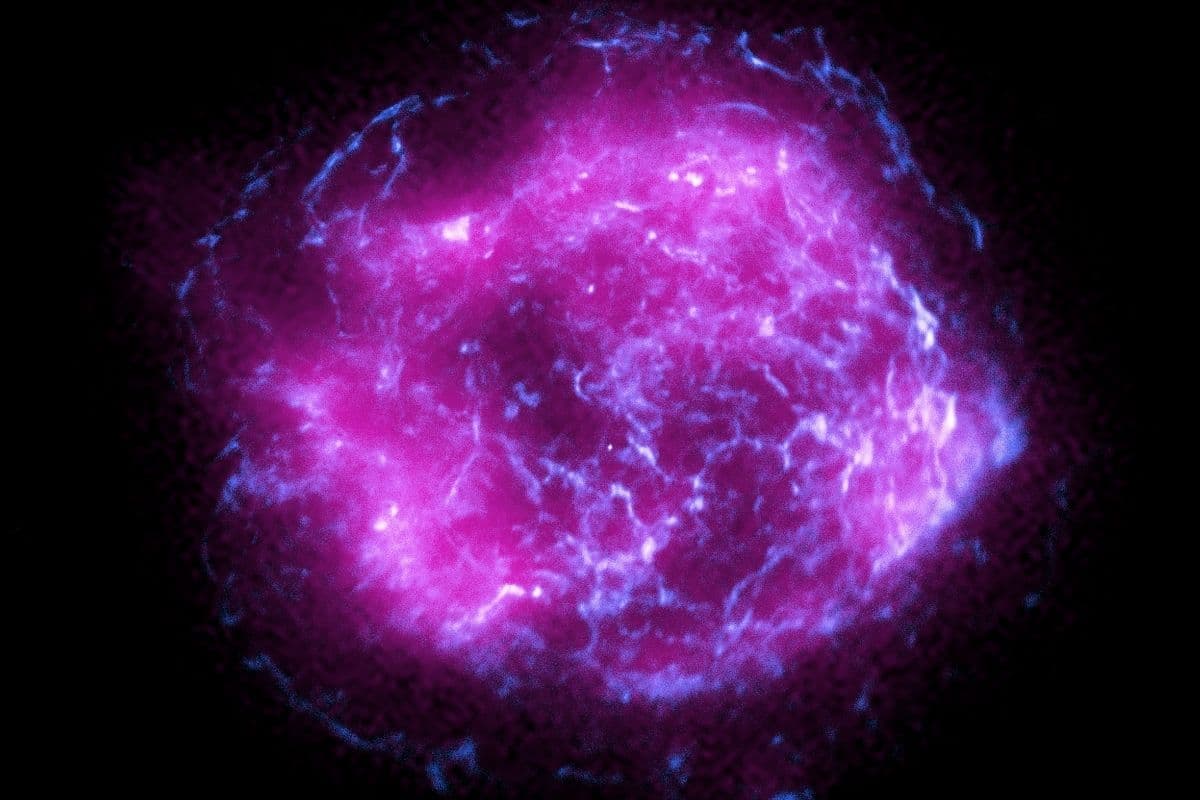

The X-ray observatory that orbits Earth 600 kilometers is set to uncover some of Cassiopeia A’s remaining secrets.
IXPE – or the Imaging X-Ray Polarimetry Explorer, as the observatory is called in full – was launched in December 2021. After the observatory established itself in orbit around our planet, it took several months to get it up and running. But recently the time had finally come: the observatory delivered the first real recordings. And on those shots, Cassiopeia A shines: the remnant of a star that exploded in the seventeenth century.
spectacle
It turned out to be a pretty spectacular picture. But what exactly do we see here? The explosion that happened centuries ago created shock waves that in turn caused the surrounding gas to heat up considerably and to accelerate cosmic rays. The result is a cloud that glows in X-ray light.
Chandra
Other telescopes – including the Chandra X-ray satellite, for example – have examined Cassiopeia A in the past, but that makes the first scientific image of IXPE anything but superfluous. Because the brand new X-ray observatory enables scientists to study Cassiopeia A in a new way.
For example, IXPE is able to measure the polarization of X-ray light. This means that IXPE can determine the orientation of the X-ray light as it travels through space. And that in turn may reveal more about the environment in which this X-ray light originates. In the case of Cassiopeia A, those data enable researchers for the first time to see how the polarization in the supernova remnant — which is about 10 light-years wide — varies from place to place. And researchers are currently working on creating the first-ever X-ray polarization map of Cassiopeia A based on the data collected by IXPE. And that is expected to provide new clues about how X-rays are generated in Cassiopeia A.
Recording
In any case, while waiting for the first research results, we can marvel at the beautiful image that IXPE has made of the supernova remnant. Those recordings have been combined with recordings of Chandra for the image below. For example, in blue you see the high-energy X-ray light as observed by Chandra. The magenta hues come from IXPE and their saturation is determined by the intensity of the X-ray light detected by the new observatory.

The first recording from IXPE, combined with data from Chandra. Image: NASA/CXC/SAO/IXPE.
Historical
Funny detail is that when Chandra opened her eyes in 1999, she was the first to stare at Cassiopeia A. Those images then revealed that a compact object resides at the center of the supernova remnant. It may be a black hole or a neutron star. “The IXPE image of Cassiopeia A is as historic as the Chandra image of the same supernova remnant,” said lead researcher Martin C. Weisskopf. “The image shows that IXPE has the potential to provide completely new information about Cassiopeia A.”
Of course, IXPE will not keep its eye on Cassiopeia A all the time. The $188 million observatory plans to study other supernova remnants during its two-year mission. In addition, the observatory will also examine pulsars (fast spinning neutron stars), magnetars (neutron stars with an extremely strong magnetic field) and the center of our galaxy. “IXPE is going to show the violent universe around us – like exploding stars and black holes at the center of galaxies,” said NASA chief Thomas Zurbuchen. “And in a way we’ve never seen them before.”
Source material:
†NASA’s IXPE Sends First Science Image” – NASA
Image at the top of this article: NASA / CXC / SAO / IXPE